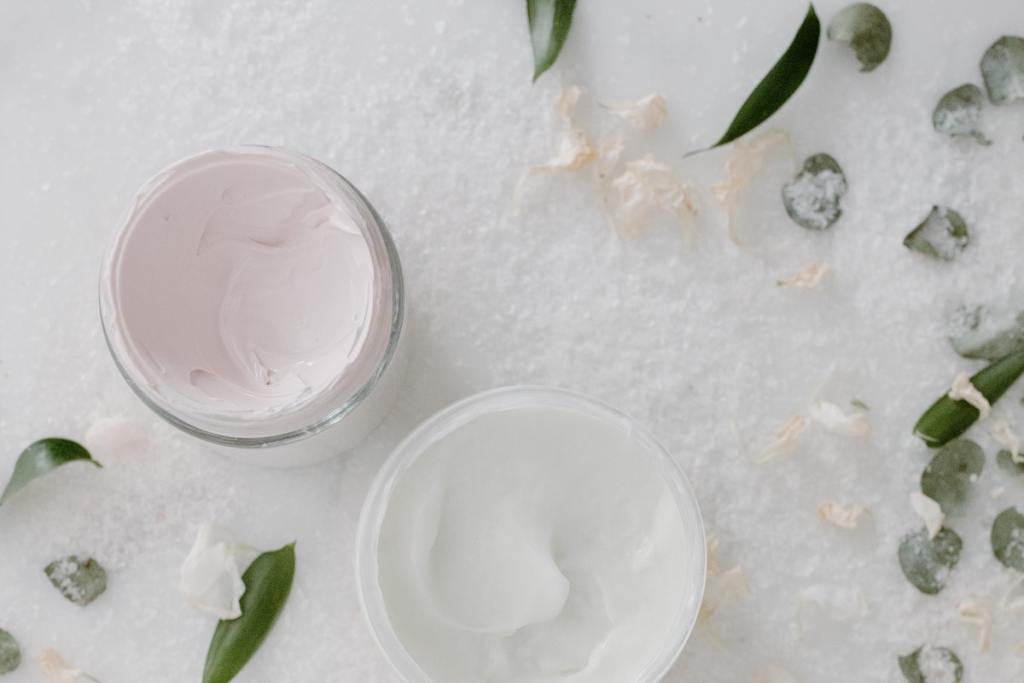Smooth skin, an even tone, and a blemish-free face. Many believe this coveted trifecta of skin health can’t be achieved without the help of a celebrity dermatologist and $300 face cream.
Luckily, there are easier and less expensive ways to achieve glowing skin. Our favorite? Simply exfoliating. With a little help from our favorite experts, we’re diving into the best exfoliation tips that will change your skincare game forever.

What exfoliation does
So what actually happens under the surface when you exfoliate? How different is it from just using a facial cleanser? Dr. Katie Barlow, a practicing dermatologist in St. Paul Minnesota, says,
“Exfoliation, whether chemical (ex: glycolic or salicylic acid) or mechanical (scrubs, Clarisonic brush or even a washcloth), helps encourage dead and dry skin cell turnover.”
In short: Out with the old, in with the new. You can make your own exfoliant out of things that likely already exist in your kitchen, or buy a ready-made one from the beauty aisle. Whether you use a chemical or mechanical exfoliant, as long as you’re applying it properly and treating your skin with care, you’re on your way toward beautiful, youthful skin.
First, know your skin type
Your skin type largely determines how often you should exfoliate and what kind of base is best for your skin. If you don’t know your skin type, look for an online quiz or run to Sephora and ask an associate.
Remember, your skin type isn’t permanent and can change at any time. If you move to a different climate, experience changes in your stress levels, or alter your sun exposure, for example, you can dramatically change your skin. This is why it’s crucial to listen to your body and change the kind of exfoliant you use (and how often you use it) depending on the condition of your skin.
For your skin type, know which base to use
We’ve covered the fact that there are many different exfoliants, so what will work best for you?
First up, coffee! Besides waking you up, a coffee-based exfoliant is safe for any skin type, and works as a great base that you can personalize based on your needs. Add oil and yogurt for dry skin, or honey and coconut oil to tackle acne. For a premade exfoliant, try First Botany Cosmeceuticals Store’s Arabica Coffee Scrub to diminish visible lines, wrinkles, acne, acne scars, discoloration, and more.
Sugar-based scrubs are a little harsher because the granules are larger than ground coffee. If you’ve decided to test out a sugar scrub, be extra careful if you have sensitive skin. The Tree Hut Shea Sugar Scrub is a whole-body scrub that’s paraben, sulfate, alcohol, and formaldehyde free. The addition of shea butter, avocado, and macadamia seed oil will keep your skin moisturized and smooth.
Brown sugar scrubs are also fit for many skin types and are gentle enough for your face as well as your body. We love Brooklyn Botany Brown Sugar Scrub which will leave your body feeling (and smelling) lovely.
So, how often?
Now that you’ve picked out the best exfoliation method for you, it’s time to determine how to exfoliate regularly without leaving your skin overexposed, red, and raw. Dr. Barlow points out it’s all about skin type, saying,
“For people with dry or sensitive skin, exfoliating once or twice a week is often enough. For very oily skin types, exfoliating up to five times a week may be tolerated. Combination skin falls somewhere in between.”
Once or twice is enough. That seems to be the safe number to go with. Dermatologist Dr. Adam Mamelak of Sanova Valley Dermatology in Austin, Texas warns about the dangers of too much exfoliating:
“As beneficial as exfoliation is, it is also just as critical to not do it to excess. After all, it is the act of causing abrasion to your skin. Excessive exfoliation can result in dry, red, and tender skin, which will be more susceptible to infection and other complications.”
Exfoliating even once a week is better than nothing. It’s up to you to find the right balance for your skin, but also to do the work to help your skin. Bellaire, Texas-based plastic surgeon Olga Bachilo, MD can’t stress this enough saying,
“Only 20% of [patients’] results are what I can do for them in the office through treatments or surgery, and 80% is their ongoing skin care routine.”
Keep in mind that you should never scrub your face or body if you’re finding red patches, sore skin, or open wounds. If you ever find your skin being red for long periods of time, you should slow your roll on exfoliating, give your skin a break, and contact a healthcare professional if the problem persists.
BlissMark provides information regarding health, wellness, and beauty. The information within this article is not intended to be medical advice. Before starting any diet or exercise routine, consult your physician. If you don’t have a primary care physician, the United States Health & Human Services department has a free online tool that can help you locate a clinic in your area. We are not medical professionals, have not verified or vetted any programs, and in no way intend our content to be anything more than informative and inspiring.




